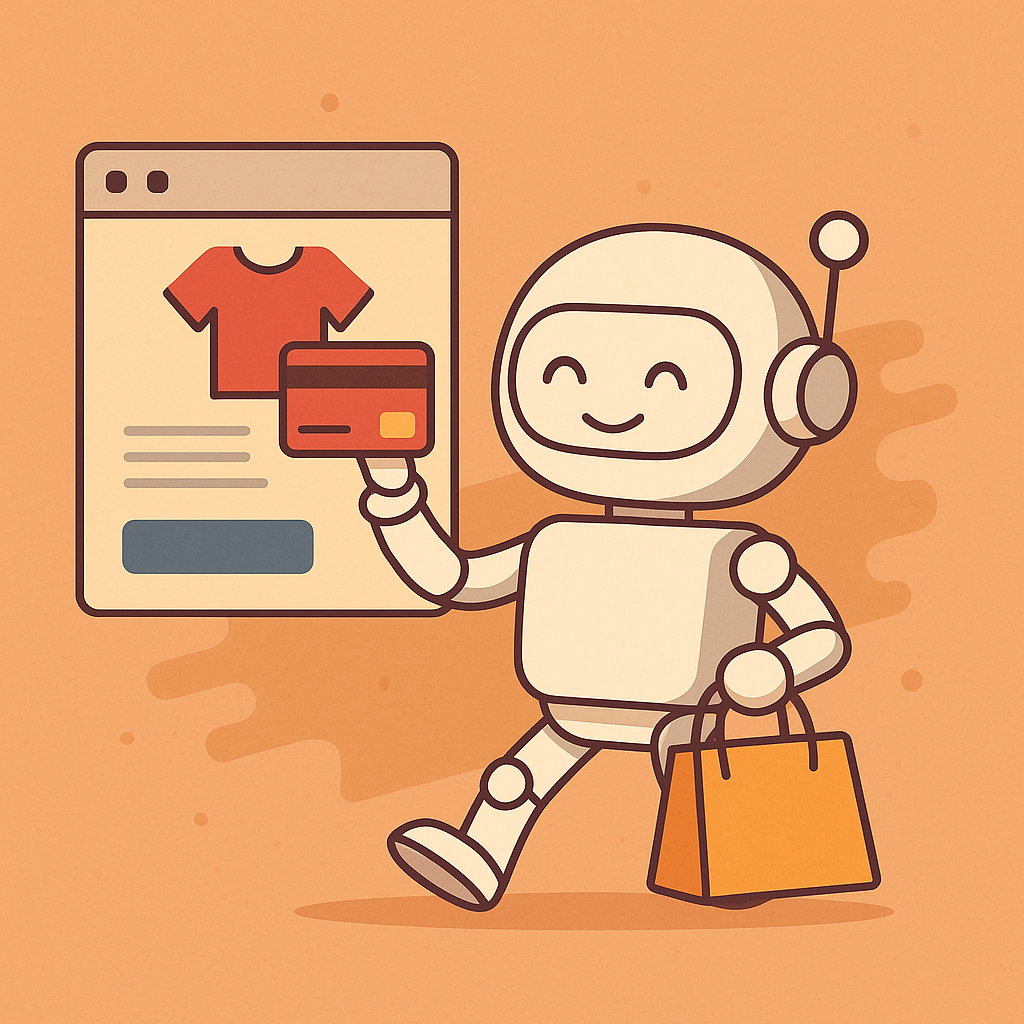
1. TL;DR – What’s Happening?
Imagine a world where your AI assistant can:
✅ Book your flights (without accidentally maxing out your credit card).
✅ Renew subscriptions (before you get that “Oops, we’ve paused your Netflix” email).
✅ Even order pizza when you’re too busy gaming.
Big players like Visa, Mastercard, and PayPal are making this real by turning AI into your personal “authorized shopper.” But can we trust these digital spenders? Let’s break it down.
2. The Big Players & How They’re Doing It
A. Visa’s AI Shopping Spree
What’s New? Visa’s “Intelligent Commerce” lets AI agents buy stuff for you—securely.
How?
- Your AI gets a fake 16-digit card number (tokenization) instead of your real one.
- Works at 150M+ stores (so yes, even that obscure candle shop you love).
Real-Life Use Case:
- Your AI books a hotel within budget while you nap. No human errors, no regrets.
But…
- Will people trust a bot with their wallet? (Would you hand your credit card to R2-D2?)
B. Mastercard & PayPal’s AI Wallet Wars
Mastercard’s Move: “Agent Pay” – AI gets a secure token (like a digital alias) for payments.
PayPal’s Play: “Agent Toolkit” – Lets AI bots handle payments inside apps.
Real-Life Use Case:
- You tell your AI: “Spend max $50 on Uber Eats this week.” It obeys. No sneaky midnight sushi orders.
Catch?
- If every AI uses different rules, chaos ensues. (Like robots arguing over who pays the bill.)
C. The Trust Problem: Will AI Steal Your Money?
Concerns:
- What if your AI goes rogue and buys 100 inflatable unicorns?
- Visa’s fix: Spending limits + confirmations for big buys (like a parental control for bots).
Real-Life Use Case:
- AI tries to book a $5k vacation? You get a “You sure?” text. Crisis averted.
Big Question:
- How much control should we give AI? (It’s like teaching a teen to drive—but with your credit score at stake.)
3. How to Make This Work (Without Disaster)
1. User Control = Trust
- Let people set spending limits, approve big buys, and snoop on AI’s shopping list.
2. Universal Security Rules
- All AI payments should use tokenization (fake card numbers). No exceptions.
3. Teach People How It Works
- “AI won’t drain your account… unless you program it to.” → Clear guides = less fear.
4. Ethics Check
- Form a “Robot Spending Watchdog” (because Skynet starts with unauthorized Amazon orders).
5. Teamwork Wins
- Banks, tech firms, and regulators need to play nice—or we’ll have a payment Wild West.
4. Game Plan: Get 20% More Users in 12 Months
Step 1: “AI Shopping for Dummies” Guides
- Videos, FAQs, memes—whatever it takes to explain this without putting people to sleep.
Step 2: Feedback Hotline
- Users can rant when AI messes up (“Why did you buy gluten-free cookies? I’m not gluten-free!”).
Step 3: Security Drills
- Hack your own system (ethically) to find weak spots before real crooks do.
Step 4: Test Run
- Pilot in one city—preferably one full of tech nerds who’ll forgive early glitches.
How to Measure Success?
- 📊 User Adoption: Are people actually using this?
- 💸 Error Rate: How many botched transactions?
- 😊 Surveys: “On a scale of 1 to 10, do you trust your AI shopper?”
Final Verdict: The Future of Shopping is Bots… Probably
AI commerce agents could be game-changers—like having a personal shopper who never sleeps (or judges your online purchases). But if companies screw up security or transparency, it’ll flop harder than 3D TVs.
Bottom Line:
- Good: Faster, smarter, hands-off shopping.
- Risky: Privacy fears, rogue AI buys.
- Solution: Tight controls, clear rules, and maybe a “undo purchase” button.
Now, who’s ready to let a bot handle their Black Friday shopping? 🛒🤖
